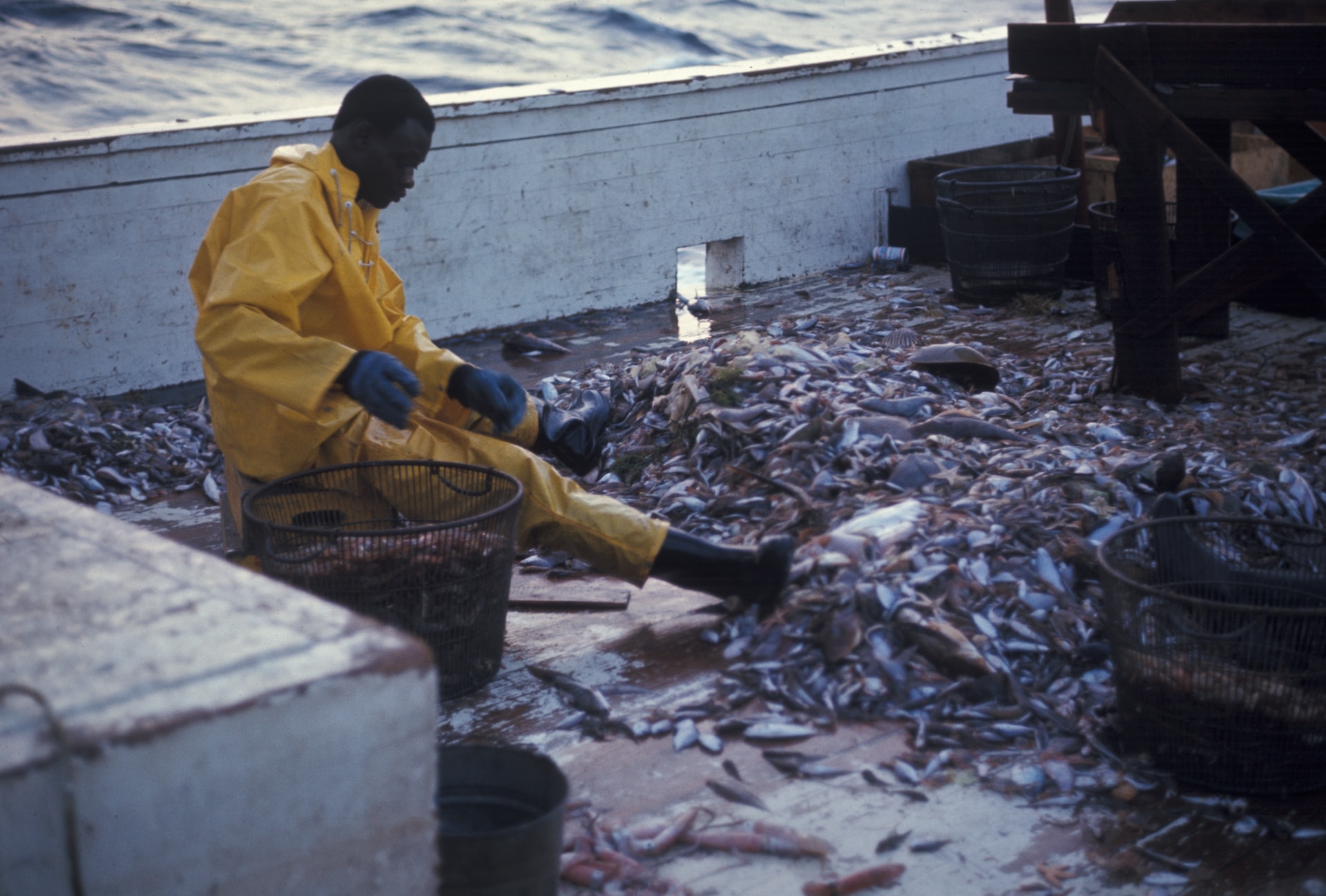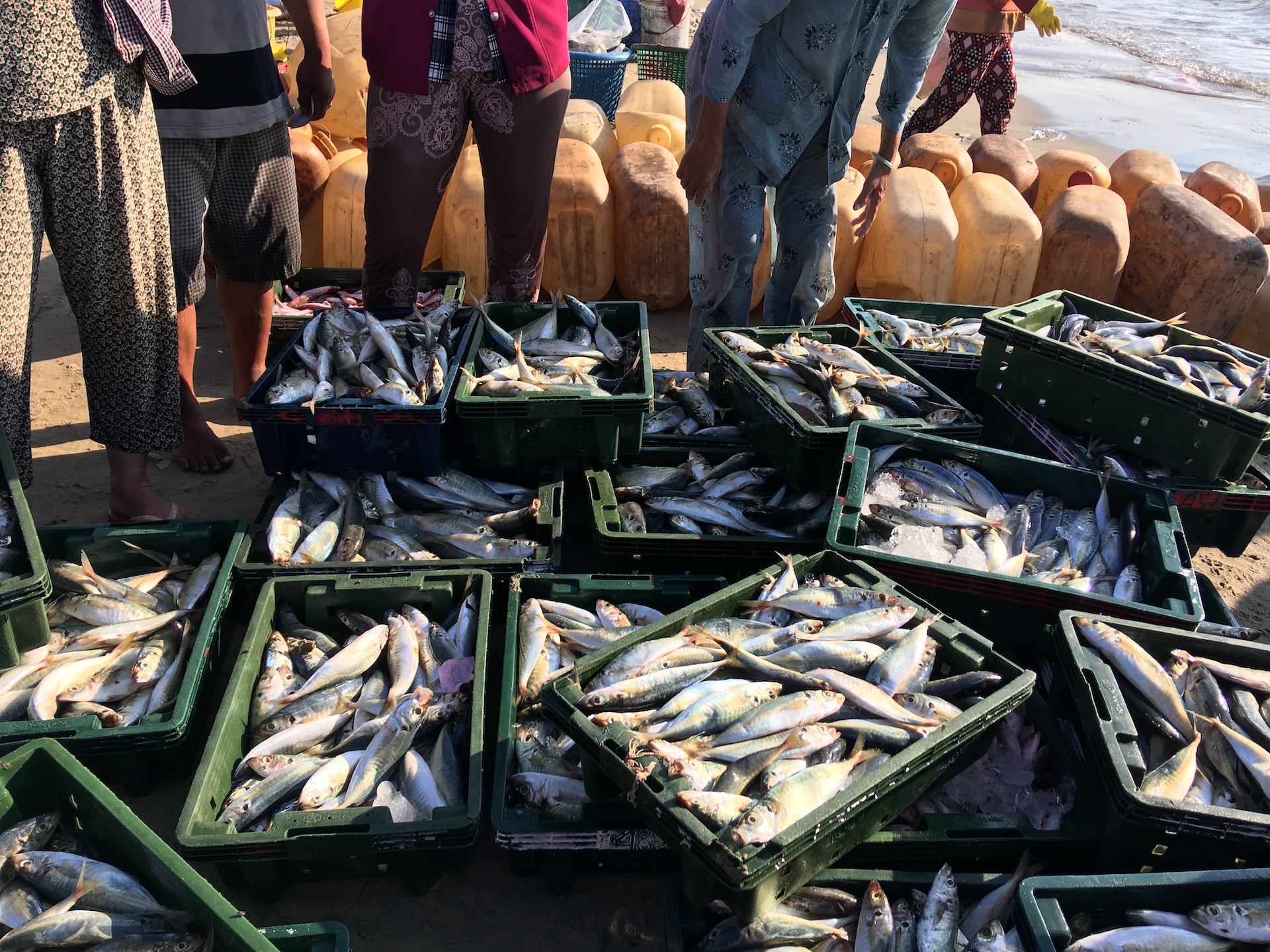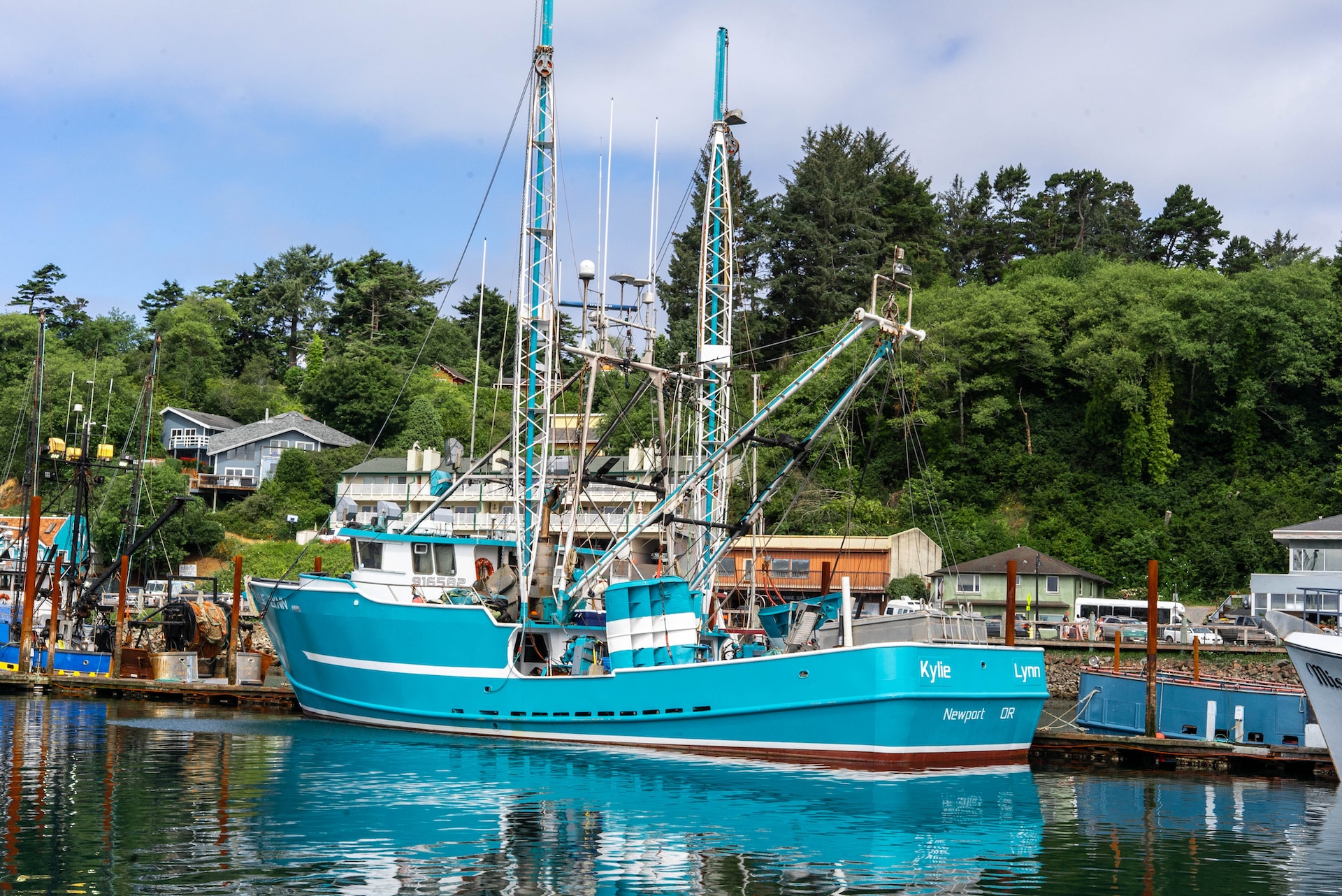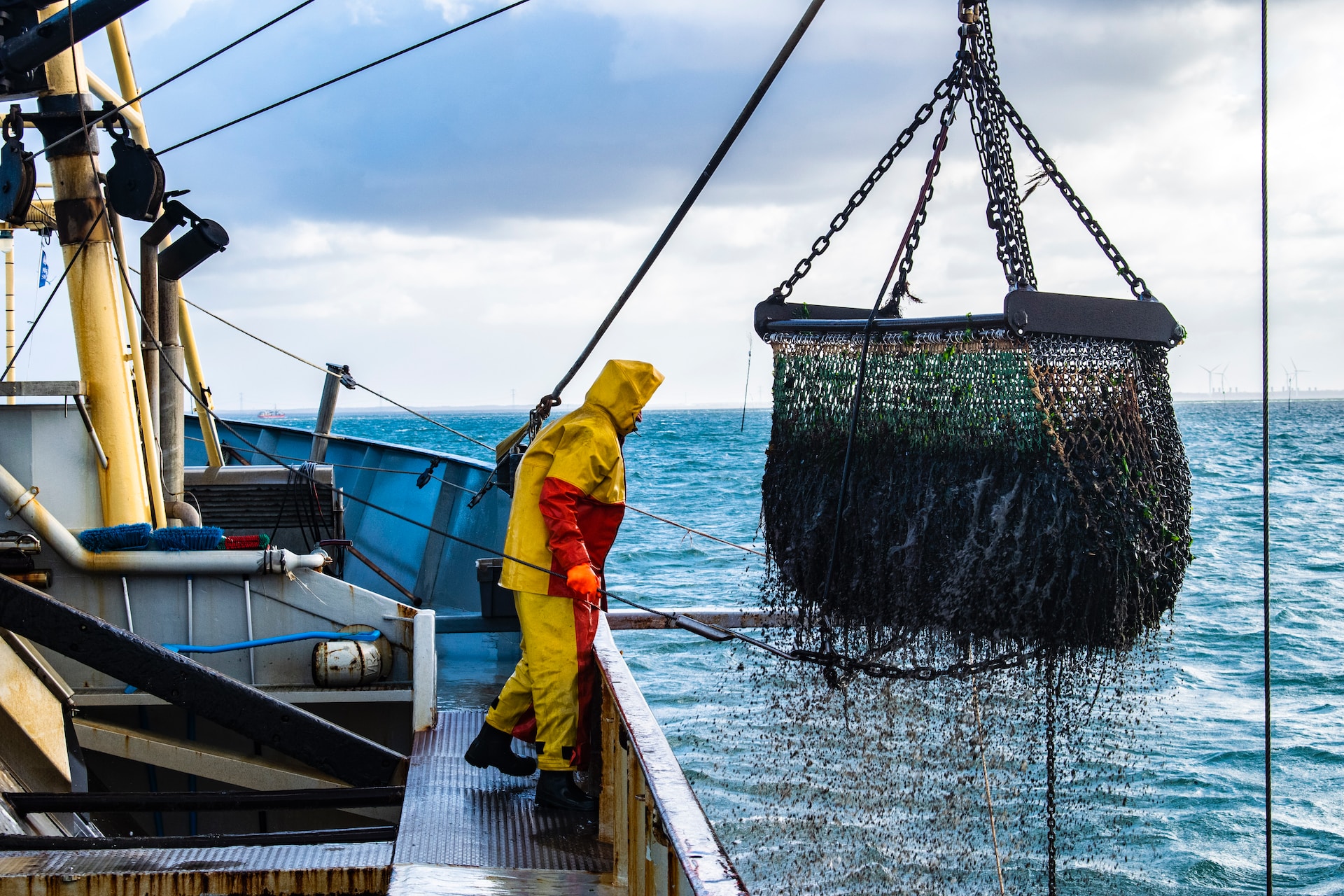Overfishing: The Full Impact - and What We Can Do
Overfishing is a global disorder that has to be dealt with by an international body of organizations, regulatory harmony, and resolute enforcement.
Last updated: April 2, 2024
By: Brandon Sanders
According to the World Wildlife Fund, since the 1970s, over 80% of global wildlife and fish have vanished from the face of the planet. Today, 70% of freshwater species of fish are under some threat of extinction. One out of every three shark species faces extinction.
While this isn’t exclusively the fault of overfishing, it’s definitely a contributing factor. As global populations have swollen over the past few decades, the human race has severely burdened many of its historical food sources. The challenge to conservationists, economists, and policymakers is to find solutions that will preserve both the human race as well as the wildlife and fish it resides alongside.
Overfishing: A Quick Overview
• 3 Billion people rely on fish as a primary food source
• Up to 12% of the population relies on fish for income
• Marine vertebrates declined by 49% from 1970 to 2012
• 29% of marine fisheries suffer from overfishing
• Only 3.4% of the ocean is protected from overfishing
The Alarming Facts on Overfishing 🚨
Overfishing directly impacts the viability of marine environments, as a vital part of the system is being removed. The wholesale removal of certain fish has been proven to result in the slow and steady degradation of coral reefs and other critical marine structures.
These reefs support a variety of species that are food for the species of fish that we seek to consume ourselves. By allowing overfishing to continue, we run the risk of creating a situation that is not reversible.
Species of Fish at Risk of Overfishing
Many of the species of fish that we love to catch, read about in books, and enjoy on our dinner table are directly at risk of overfishing.
Albacore tuna is listed as “near the threshold” of being endangered. This species is especially troubling since albacore makes up the majority of canned tuna in the developed world. Attempting to curtail fishing of this species would raise the price of canned tuna fish and likely have a negative impact on the fishing industry long term.
Bluefin tuna are another species that has been downgraded from “least concern” to “near threatened” in the Atlantic fishery. This means that as fishing for bluefin continues, if not adequately regulated, bluefin could descend into the threatened category. In addition, illegal fishing and government subsidies in the developing world run a severe risk of permanently degrading the bluefin tuna.
Yellowfin tuna are also a prevalent species in the sushi market. However, due to this popularity, they have also taken a severe hit in numbers over the past several decades. This species is often the subject of many TV shows and other media, exacerbating their extinction.
Biggest Causes of Overfishing 🐠
While overfishing can often be a complex economic, societal, and cultural issue, there are two main drivers that cause overfishing. Illegal fishing in well-managed fisheries is a primary demon that has to be battled with. Additionally, ill-thought-out government subsidies also have an impact on fisheries.

Illegal Fishing
We live in a day and time that is fundamentally unique to the human race. For most of our history, it took a large ecological change to cause mass extinctions. However, with the human race numbering billions, we have become the ecological force that can reshape the planet’s ecosystems.
While this isn’t fundamentally bad, more people equate to more economic activity and, therefore, more conservation dollars. We have to sacrifice the freedom to hunt and fish without restriction in order to preserve fish populations. If we didn’t, we would see populations dry up and be destroyed much like they were during the market hunting days of the late 1800s.
Today, in America, we operate under a model called the North American Model of Conservation. This system has seven fundamental rules that guide our management of fish and wildlife so that they are preserved for generations to come.
Illegal fishing violates nearly all of the rules of our conservation system. The most egregious is the ignoring of science-based conservation methods. Limits in fishing are not arbitrarily set but are driven by the scientific understanding of how much the carrying capacity of the environment is and the number of fish needed to maintain a healthy population.
When illegal fishing takes place, an unaccounted for burden is placed on the fish population that impacts them in a negative way. Along with natural attrition and legal fishing, illegal fishing begins to reduce the number of fish in the population to levels that cannot be sustained long-term.
Luckily, illegal fishing tends to have a fairly manageable impact. However, in places where enforcement is too costly or not feasible, it can be devastating. Often all that is needed is a detrimental event to take place in an area that is overrun with illegal fishing to permanently destroy the fishery.
Therefore, illegal fishing is a major focus of management agencies and conservation groups. It is one facet of fisheries management that is completely preventable. All that is needed is a strong enforcement presence along with economic incentives to engage in more fruitful activities.
Dealing with Subsidies
Government subsidies are a key driver in overfishing. Rather than letting a fishing industry die on the vine, governments provide financial incentives, tax benefits, or other tools to help fishermen maintain their livelihood through hard times. While this is well-intentioned, it often creates a situation where people become overly reliant on fishing rather than diversifying their food portfolio.
The way the economy works is by culling the least efficient businesses and letting them die financially. When the government steps in to support a business that would close without its help, they subvert the natural law of supply and demand. While this always has some impact on the economy, it can be devastating to fisheries.
The reason is fairly simple. Fish are oversupplied in the system, so the price falls. As the price falls, the cost to extract, transport, and sell the fish becomes far too high for the business to remain viable. At some point, the entire enterprise simply can no longer afford the items it needs to stay in business. This natural law of economics protects fish populations from becoming overfished.
However, when a government artificially subsidizes the industry, it subverts this process. Even though the fish are oversupplied, the government literally buys the gas for the boats to continue to go out and supply more fish. Eventually, something has to give since this is a finite system. The end result is fish populations at an unsustainable rate of decline.

The Full Cost of Overfishing 💰
Mismanagement of a fishery impacts far more than the fishery in question. Instead, those ripple effects travel through the food supply, into the economy, and beyond. Let's examine how overfishing impacts the rest of the nation in its entirety.
First, overfishing completely devastates the ecosystem that is being fished. This means that further harvests also jeopardize any other source of food in the future. Simply removing one fish can entirely upend the system for generations to come, if not forever.
When the ocean ceases to produce quality food for a population, they then are faced with having to choose between starvation or other food-gathering methods. Often, other methods are not feasible in the environment they are located in. Therefore, they begin to rely on processed foods, international aid, or other sources that have second and third-order effects that are detrimental to the population.
As this takes place, their economy begins to shrink as the capital invested in the harvest of fish has to be freed up and reinvested in other methods of food acquisition. This transition period leaves the people vulnerable to political instability, food insecurity, and exploitation by other nations.
Where Does Overfishing Take Place? 🌎
Today, overfishing happens nearly everywhere in the world. During the middle part of the last century, populations began to increase worldwide. This phenomenon that we know in America as the “baby boom” also placed a large amount of pressure on the fisheries across the world. Today, the areas with the greatest population increases, now face tremendous fishing pressure.
Coast of China
When looking at the impact of the Chinese population boom, many topics come to light. While pollution and economic power are certainly one of the most attention-grabbing topics, many people overlook what a few billion people can do to a fishery. Today, China and the surrounding nations rely heavily on the entire Pacific Ocean to help feed its population.
Coast of Peru
Thanks to the lack of economic opportunities, a solid work ethic, and a bountiful fishery, the people of Peru are well known to put a heavy hand on their fisheries. The good news is the government of Peru understands the impact they are having on the Pacific and are responding in force. In a few decades, this part of the world will have a much better-managed fishery.

African East Coast
Thanks to the growing populations of India and parts of Africa, there is a high level of fishing pressure placed on the Indian Ocean. This is particularly impactful to the yellowfin tuna that is in high demand across the world. Since the lack of economic infrastructure and high population greatly incentivizes locals to take the physical and legal risk to continue to catch and sell fish, there seems little that can be done to save this sector of the world’s oceans from overfishing.
Coast of California and Europe
The immediate coasts of Europe, New England, Canada, and California are also prime overfishing areas. Luckily, these are areas that have mature regulatory environments with well-funded enforcement agencies. Therefore, illegal fishing should be very easily managed with the implementation of Bait to Plate and other technologies in the near future.
What Are Organizations Doing to Combat Overfishing? 🏛
If overfishing is such a dastardly specter, then certainly someone is trying to do something about it. While there are many organizations at work to maintain the ocean’s fisheries to a sustainable level, this issue is a complex one. There is no silver bullet that will fix overfishing entirely, but two notable endeavors will prove to be instrumental in reducing it in the near future.
Bait to Plate
One of the biggest steps toward overcoming overfishing is the Bait to Plate initiative. International organizations are seeking to create a serialized tracking system for fish that are being caught in the oceans and then sold abroad. As this system comes online, it will greatly help reduce the number of illegal fish that enter the food chain.
However, there are challenges with this approach. Since the increased regulation will increase the price of illegally caught fish, there will be a greater incentive to buy fish on the black market. Avoiding the regulation will decrease the price of the fish but will also limit the market size. Since the majority of illegal fishing happens in developing world markets, this will still be a challenge even after Bait to Plate is fully functional.
Therefore, it is important to continue to grow the economies and food systems of these developing world markets. Once there are cheaper alternatives to fish, or at least other food that is comparable in price, then illegal fishing will shrink to a size that can be managed by enforcement agencies.
Technological Solutions
Another potential solution to the problem of overfishing is tracking devices placed on fishing boats. These devices will alert authorities if the fishing boat enters illegal waters or violates conservation laws of one type or another. As satellite communication and technology continue to increase in its effectiveness, the technological approach to fixing this issue becomes more and more realistic.
However, even with this approach, the specter of catching fish illegally will rear its head. As food prices climb, more and more people will take to catching fish without any compliance with fishing regulations. Buying, installing, and maintaining these systems are expensive, and those costs will inevitably be passed onto the consumer. As this happens, black market fish are likely to undercut the price of fish that are legally caught.
Once again, the only real answer is to remove the desire to fish illegally. Criminals will always find a way to skirt the system, and enforcement will be necessary so long as there are humans to commit crimes. However, if the vast majority of the population has better options than illegally caught fish, then they will likely defer to them.
Do Fish Farms Help with Overfishing? 🚜
Fish farms are a controversial subject. There are both positives to relying on fish farms for food as well as negatives.
The positives are relatively obvious. Since the fish farms are providing the population with fish that are harvested in a much more efficient and effective manner, the price point of the fish is lower. Therefore, wild populations of fish are allowed to go unmolested in their natural habitat.
This leaves illegal commercial fishing without a market to sell to. Since their product has to account for the cost of acquisition and the added cost of the risk of conducting an illegal operation, they have a very difficult time moving their products.
However, fish farms also have challenges that have to be overcome. Since many of these fish farms are actual farms with ponds, tanks, or other containment devices, they have to be managed much like an actual farm. One of the great incentives of fishing is that you don’t have to tend it every day. You merely have to go catch the fish. This is not true with a fish farm.

Since that is the case, there is a high cost in terms of land, upfront capital, and technical knowledge in managing a fish farm. While this is easily acquired in the developed world, provided there is a market demand for farm-raised fish, the developing world will have quite a challenge with it.
Another issue is the accidental escapes of non-native fish into local waters. If a competing fish species were to enter into the home waters of a struggling fish species, the only real outcome would be the devastation of the native species. This is a tragedy.
However, it is largely a function of the lack of oversight of the maintenance and operation of these fish farms. Provided that future escapes can be prevented by proper regulation without adding so much to the cost of the farming operation, fish farms could still be a viable solution to the overfishing problem.
What Can Be Done to Stop Overfishing? 👇
Lucky for us, this is not the end of the road. There are many things that can be done to curtail overfishing and save the population. The real challenge is to build the political will in enough of the world to propel governments into action.
Removing Subsidies
The single most impactful thing that can be done to curtail overfishing is to end government subsidies in the fishing industry. However, we must remember that the reason these subsidies are put into place is to ensure a steady food supply for their population. Therefore, encouraging the redirection of funds to subsidize farming or other methods of food acquisition must also happen simultaneously.
Increasing Awareness
Another major obstacle to overcome is the lack of awareness of the human impact on fisheries around the world. The good news is that thanks to social media, this is also a very easy thing to do. The challenge is to put a real, local face on the issue and not to make it just another arbitrary share.
Therefore, conservation agencies that focus on preserving global fisheries should focus more on the impact that overfishing has on local economies and people. While it is important to remember the impact on the species themselves, showing the human impact is likely to garner much more empathy.
Global Coordination
While overfishing may seem like a dark subject, it actually has some very endearing outcomes. One of which is increased global coordination and cooperation. Enacting significant change in one country just to have the coastline that it shares with its neighbor to be overfished next door is pointless. Therefore, coordinating across boundaries and borders is needed.
This coordination of fishing regulation and conservation has been fairly effective and robust. It has further laid the groundwork for continued dialogue and relationship building that goes beyond the topics surrounding conservation. However, there is still work to be done and more countries to be brought into the fold.
Conclusion 🏁
It’s clear that overfishing creates a significant threat to many species of fish. The issue surrounds a very large commercial industry, which plays an important part in the world’s global food supply chain.
Many hobbyists fish for fun, in domestic waterways, for species such as largemouth bass. Yet even if fishing from a small vessel such as a kayak, there are clear rules and regulations established to protect the local fish species.
Applying and enforcing such rules to international waterways has significant challenges, as we’ve outlined above. This issue needs to be explored urgently, before further species of fish can no longer be found.
Understanding Overfishing: FAQs
What’s the primary cause of overfishing?
The primary causes of overfishing are government subsidies, illegal fishing, and bycatch by legitimate fishing that is used to sustain an ever-growing global population. While fishing is and will likely remain a major source of food for the world in the future, overfishing is a food security threat that must be taken seriously. Using enhanced technology, fish farms, regulation, and food diversity will help curtail the impact of bycatch, illegal fishing, and overtaxed fisheries in the future.
Where is overfishing the biggest problem?
Overfishing is the biggest problem in heavily populated areas that are next to coastlines. Some examples are the California coast, the MesoAmerican Reef, and the Ivory Coast. All of these areas have populations that historically relied on fish for protein. However, as global populations have grown, they have over-taxed the fishery that has fed them.
Is overfishing killing the ocean?
Overfishing is slowly killing the ocean since the rest of the ecosystem relies on fish as a part of the food cycle. As fish begin to disappear, the food chain becomes more and more disrupted. This results in migration and mass die-offs of species that go beyond the fish we are interested in.
Will the ocean run out of fish?
The ocean is not likely to run out of fish, provided proper management is put into place to curtail overfishing and pollution. Habitat restoration efforts and population restoration are crucial alongside providing people with other means of getting protein. Fish farms and building local economies to be more robust and diverse are just two ways to prevent the exhaustion of fish from the oceans.
How does overfishing affect humans?
Overfishing affects humans in a variety of ways. Primarily, it raises the cost of food and increases food insecurity in the short term. In the long term, food and economic effects that are difficult to reverse will grow to become a major challenge.
Further reading:
About the author: Brandon Sanders, who goes by BBSanders, is a freelance outdoors writer that enjoys hunting and fishing across the world. He is a combat veteran of Iraq, Afghanistan, and many other smaller deployments. He lives in East Texas in a small cabin with his wife and two dogs. You can learn more about him on his own website, here.